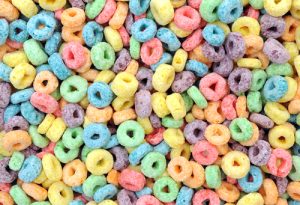
Longevity is affected by genetic traits and environmental factors. Research shows that nutrition is a major determinant in longevity, and a balanced diet rich in fruits and vegetables, complex carbohydrates, fish and adequate water may extend the life of not only the young but the elderly population as well.
According to a recent governmental nutrition study, Americans are consistently eating far below the daily recommended suggested servings of fruits and vegetables, which provide the best variety of vitamins and minerals. In fact, 69 % of Americans do not get enough green; 78 % fail to get enough red; 86 % don't get enough white; 88 % don't get enough purple and blue; and 79 % do not get enough yellow and orange. Not just that, we tend to eat the same few produce over and over again.
This skew toward bland means we are missing out on a lot more than just good-tasting food. There are unique phytochemicals, or plant chemicals, that vary from color to color. These various compounds all do different things to protect your health. If people are eating only red bell peppers, they are going to be limited as far as health benefits because the color spectrum will be missing. There is a color code to food, meaning that when people pick the right colors to eat, there are huge nutritional payoffs. 
Sadly most people think of foods like froot loops or other popular colored, processed foods what the words "Eat Your Colors" are mentioned. Of course, I am not referring to the harmful food dyes in our foods. Actually, the FDA allows about 800 grams of harmful food dyes to be consumed by each individual per year, stating that 767 grams, which is the actual number is safe for human consumption. I did write an article on food dyes and the harm it does to our minds and bodies on truthNhealth.com, so please read that when you get a chance. This article, however, speaks to one of the truest ways to live optimally and maximize Mother Earths foods but eating foods that have the whole spectrum of natural colors. Eating this way corresponds to an age-old Eastern philosophy that one should eat foods of every color each day. Eastern wisdom believes that health and longevity depend on a balance of the five elemental energies; the elements are represented by five colors: red, orange/yellow, green, white and blue/purple.
Both Western nutritional science and Eastern wisdom agree: When you eat all the colors, you are working far more disease-combating nutrients and vitamins into your meal. Eat your way to longevity by consuming the five-color spectrum every day in each food category – vegetables, fruits, beans and legumes, nuts and grains.
Countless studies have shown that regular consumption of fruits and vegetables can actually reduce the risk of cancer by half, and provide many other health benefits as well.

• Allergy
• Arteriosclerosis
• Atherosclerosis
• Asthma
• Atopic dermatitis
• Bruising
• Candida infection
• Cataracts
• Common cold
• Diabetes
• Gout
• Hemophilia
• Hemorrhoids
• High cholesterol
• Hypertension
• Leukemia
• Macular degeneration
• Menstrualcramps
• Migraine
• Periodontal disease
• Pneumonia
• Pyorrhea
• RheumaticFever
• Rheumatism
• Stomach ulcer
• Stroke
• Ulcers
• Varicoseveins

Fruits have an abundance of antioxidants, such as beta-carotene, lutein, lycopene, selenium, and vitamins A and C. Antioxidants are known to slow down the aging process and reduce the risk of chronic diseases. The Harvard School of Public Health recommends that people eat a colorful variety of fruits every day; fruits contain nutrients that may help you to reduce your risk of cancer, heart disease, stroke and loss of vision. Research by Kelly Wolfe published in the "Journal of Agricultural and Food Chemistry" in 2008 reports that pomegranate and berries, particularly wild blueberries, blackberries, and raspberries, are packed with antioxidants and have a higher cellular antioxidant activity compared with other fruits.
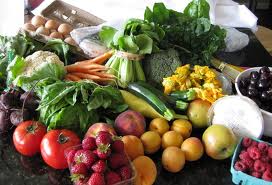
Vegetables, especially green leafy vegetables, are rich sources of vitamins, minerals, and antioxidants. Fresh vegetables are the major component of a Mediterranean diet. A Mediterranean diet, which includes fresh fruits and vegetables, whole grains, legumes, nuts, seeds and a little fish, may reduce your risk of heart disease and mortality.
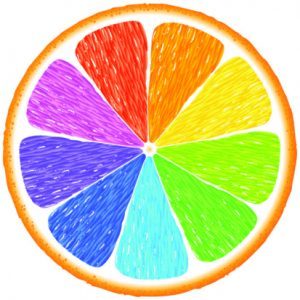
Where are flavonoids found? As a general rule of thumb, the more colorful components of the food – like the skins of fruits – the higher the concentration of flavonoids. An exception to this rule, however, is the white pulpy inside of oranges. Unlike the watery orange-colored sections of this fruit, which contain virtually all of its vitamin C, the orange’s flavonoids are found in the white pulpy portion inside the skin and surrounding the sections.
The many bioflavonoids (commonly referred to as flavonoids) in fruit, vegetables, nuts, and grains have a long list of biological properties which not only promote human health but also help reduce the risk of disease. They act as antioxidants; help lower cholesterol reduce the formation of blood clots, and have anti-inflammatory and anti-tumor action. One study found that men who consumed more flavonoids had 60 % less mortality from heart disease and 70 % lower risk of stroke than those who did not.
Bioflavonoids, also known as Vitamin P, were first discovered as a substance in the white covering found under the peeling of citrus fruits. There is ten times the concentration of bioflavonoids in the edible part of the fruit than found in strained juice, so eat the fruit. Do not drink it.
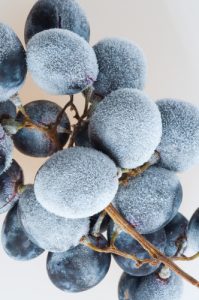
White rice has been processed and stripped of its natural vitamins and fiber. Additionally, diets containing whole grains, including brown rice, may help to lower the risk of gastrointestinal cancers and hormone-dependent cancers [breast, ovarian, prostate].
The one exception might be white basmati rice. For those with digestive conditions, basmati is much easier on the gastrointestinal tract.


Shell color depends on the specific breed of hen and has nothing to do with nutrition. (White feathers mean a hen’s eggs will have a white shell.) The key is what the hen has been eating. When hens are fed feed that contains flax, it increases the omega-3 content of the yolk. It has been shown that omega-3-fortified eggs contain 20 percent less cholesterol. In addition, omega-3 fatty acids help reduce inflammation.
There’s one exception. The bluish-green eggs, which come from the South American Araucana chicken, are not much different from traditional white and brown eggs but have a higher cholesterol content, according to the Egg Nutrition Center.

Brown could just have caramel coloring added to it, however, brown has slightly more nutritive value. When choosing between whole-grain brown bread and white bread, whole grain wins by a landslide.
White bread is empty calories, even when it is enriched. Make sure to read nutrition labels for hidden trans fats, preservatives and additives.

A red bell pepper is a green bell pepper that has matured. If the pepper turns orange or yellow it is has been hybridized for those colors. Though some say there is no nutritional difference, others believe riper peppers have better flavor and more nutrition. Also, red bell peppers have the advantage of containing lycopene, which is a powerful antioxidant best known for maintaining prostate health.
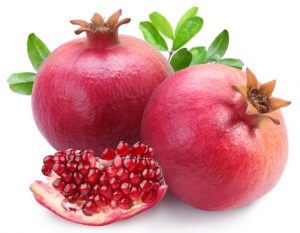
The pigments that impart the red coloring to many foods are known as anthocyanins, flavonoid compounds that fight free radicals and prevent oxidative damage to cells. The antioxidant lycopene found in pink grapefruits, tomatoes, and watermelons have been shown to reduce the risk of prostate cancer. Add red to your meals by tossing a handful of raspberries, strawberries, goji berries or pomegranate seeds into your cereal, slicing roasted beets or red bell pepper into a salad, or adding cooked red adzuki or kidney beans to a rice dish. Go nuts with pecans, and get red-hued health gains with buckwheat and amaranth grains.

Thanks to the carotenoid pigments in such orange vegetables as sweet potatoes and pumpkins, we can brush free radicals away, improving eyesight and bolstering the immune system. Beta-carotene, which is the precursor to vitamin A, can help reduce the risk of cancer and heart disease, while the vitamin C and folate in citrus fruits can peel away free radicals and boost immunity. So, go ahead, enjoy some creamy, roasted butternut squash or a juicy tangerine. Orange-yellow colors in other food categories include almonds, cashews, corn, millet, chickpeas and butter beans.
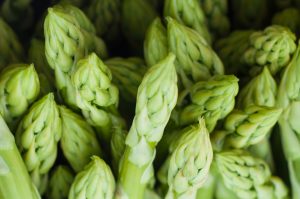
Greens are my favorite colors and they are the best for you too! The green pigment in plants, called chlorophyll, increases blood-cell production and improves oxygenation, detoxification, and circulation. Greens also contain lutein, a phytochemical that helps reduce the risk of cataracts and age-related macular degeneration. These are but a few examples of the myriad of greens that benefit your health. To color your health green, enjoy broccoli, kale, spinach, bok choy and other leafy greens. Other green cuisine choices include kiwifruit, avocados, apples, grapes, lime, asparagus, lentils, mung beans, pistachios and pumpkin seeds. My favorite way to "eat" my greens is to juice them with a little lemon and ginger. Perfect energy drink or cleansing tonic!!
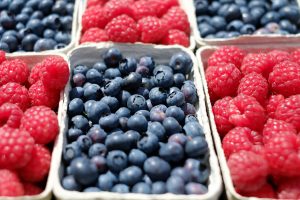
Like red berries, blueberries and blackberries receive their coloring from phytonutrient flavonoids. The phytonutrients found in blue and purple foods keep blood vessels healthy, benefiting your cardiovascular system and lowering your risk of heart disease. Flavonoids also help reverse short-term memory loss that comes with aging and may help prevent cancer. Boost your dark-food intake with raisins, dried plums, black mushrooms, purple cabbage, blueberries, blackberries, purple potatoes and eggplant. Don’t forget your nuts, grains and beans: flaxseeds, walnuts, chestnuts, black beans, navy beans, quinoa, black wild rice and seaweed, too.

Whether you prefer a crispy daikon radish, pine nuts or a luscious sweet pear, the anthoxanthins in white foods can help lower your blood pressure and cholesterol. If you love the crunch and spice of a white onion, then you will be happy to know that these tearjerkers are chock full of the flavonoid quercetin, known for its anti-inflammatory properties and cardiovascular health benefits. Other white foods to help ward off disease include garlic, potatoes, turnips, mushrooms and cauliflower. Soy beans, white beans, rice and barley are other white food choices to work into your meals.
The World Health Organization recommends each individual consumes at least 14 ounces of fruits and vegetables daily and at least 1 oz. of legumes, nuts and seeds to reduce the risks of chronic diseases such as heart disease and cancer.
Resources: vegnews.com, naturalnews.com, womenshealth.com, huffingtonpost.com
